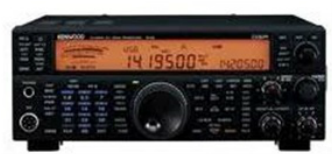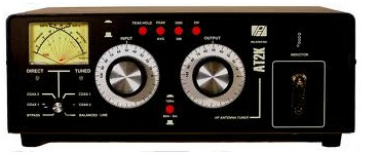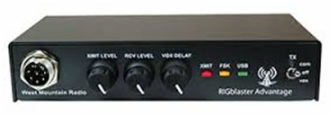Digital Modes Meanderings
The Station Upgrades

In late 2011, I realized that it was time for a station make-over. My digital mode station was working well but the equipment was steadily getting technologically antiquated. The computer was an obvious thing to be changed and that was accomplished with the retirement of the Packard-Bell computer and subsequent install of a relatively newer Hewlett Packard computer with a 1.2 GHz processor, Windows XP operating system and a host of other modern computer hardware refinements. It still was not the top of the technological heap as far as computers were concerned but a giant step in the right direction. This change was done when I switched to Fldigi as my main digital mode software. I felt that software requirements would only get needier for speed and memory in the future so I might as well pave the way for that eventuality. Besides, it could only make future operations along the way easier. Later I would be very grateful for my insight. As with the Packard-Bell, the Hewlett Packard was a spare computer that had become available when the home computer was replaced with a more modern dual core processor model. Waste not, want not. With the station computing needs taken care of it was now time to look at the center piece of the station, the radio.
The Alinco DX-70 TH had done yeoman duty as my digital mode transceiver but its days were numbered. I really needed better receiver passband filtering with better QRM (interference) and QRN (noise) fighting tools. With my low to no gain antenna a “hotter” (more sensitive) receiver would be nice as well. I will expound more about the antenna later. Several years before I had drooled over an ICOM IC-756 PROIII, but with a 3+ kilo bucks price tag it was not going to happen. So the Alinco soldiered on with its digital mode duties. Meanwhile, I kept my eyes on several newer radios which incorporated DSP I.F. filter technology and methodically perused the specification sheets and product reviews. After much research, in mid-2012, I finally narrowed the choices down to the Kenwood TS-590S. As far as I am concerned, the TS-590S is a dream machine for use on the digital modes. With a sensitive and very selective receiver, very user friendly
Kenwood TS-590S
interface, great features, super selection of I.F. filters and that wonderful manual notch filter, the only way it could possibly get better is if they had incorporated two manual notch filters! (Boy, wouldn’t that be the bomb!) I highly recommend the TS-590S for digital mode operations to anyone wishing to get the most bang for their bucks (approx. $1,500 new). As always, your mileage may vary (YMMV).
Close on the heels of the radio upgrade was another major change in the station equipment. I had for some time been toying with the idea of acquiring a new antenna tuner which incorporated an antenna switch and a SWR / wattmeter. This combination of features built into the tuner would really clean-up the station’s look and improve overall station efficiency, both in performance and usage. A lot of interconnecting coax cables and connectors would be eliminated along with any associated losses as well. The set-up at this time (2012) included a Heathkit SA-2040 Tuner, a Diawa CN-520 SWR / wattmeter, and a 3 position Amphenol antenna switch. All are good pieces of equipment and had served me well, but it was time for a change. So the search was on for a suitable replacement. Ultimately the winning selection was a Palstar AT2K antenna tuner, another highly recommended piece of ham gear.
The Alinco DX-70 TH had done yeoman duty as my digital mode transceiver but its days were numbered. I really needed better receiver passband filtering with better QRM (interference) and QRN (noise) fighting tools. With my low to no gain antenna a “hotter” (more sensitive) receiver would be nice as well. I will expound more about the antenna later. Several years before I had drooled over an ICOM IC-756 PROIII, but with a 3+ kilo bucks price tag it was not going to happen. So the Alinco soldiered on with its digital mode duties. Meanwhile, I kept my eyes on several newer radios which incorporated DSP I.F. filter technology and methodically perused the specification sheets and product reviews. After much research, in mid-2012, I finally narrowed the choices down to the Kenwood TS-590S. As far as I am concerned, the TS-590S is a dream machine for use on the digital modes. With a sensitive and very selective receiver, very user friendly
Kenwood TS-590S
interface, great features, super selection of I.F. filters and that wonderful manual notch filter, the only way it could possibly get better is if they had incorporated two manual notch filters! (Boy, wouldn’t that be the bomb!) I highly recommend the TS-590S for digital mode operations to anyone wishing to get the most bang for their bucks (approx. $1,500 new). As always, your mileage may vary (YMMV).
Close on the heels of the radio upgrade was another major change in the station equipment. I had for some time been toying with the idea of acquiring a new antenna tuner which incorporated an antenna switch and a SWR / wattmeter. This combination of features built into the tuner would really clean-up the station’s look and improve overall station efficiency, both in performance and usage. A lot of interconnecting coax cables and connectors would be eliminated along with any associated losses as well. The set-up at this time (2012) included a Heathkit SA-2040 Tuner, a Diawa CN-520 SWR / wattmeter, and a 3 position Amphenol antenna switch. All are good pieces of equipment and had served me well, but it was time for a change. So the search was on for a suitable replacement. Ultimately the winning selection was a Palstar AT2K antenna tuner, another highly recommended piece of ham gear.
Palstar AT2K
I was on a roll. With the computer, radio, and tuner performance upgrades complete it was time to take a look at the digital interface. My homebrew interface had been with me from the start and was instrumental in introducing me to the wonderful world of digital mode operating. As proud as I was of my creation it was time for its retirement and a performance upgrade in this area of my digital mode station. I felt that a digital mode interface with a built-in soundcard would be a worthwhile addition to my digital station. Now there are folks out there who are probably scratching their heads and saying, “But he already has a TS-590S and it has a USB serial port built-in. Why not just utilize that and eliminate the interface completely and save money?” It is correct that the TS-590S does have USB port and you CAN run digital modes in that manner. Here is the explanation of why I did not do that. By the way, while “free is good” it is not always the correct solution for a given situation.
If you run a USB cable from the TS-590S (or some other like radio) to the computer and run digital modes like that you give up some flexibility in your digital mode operations. The biggest loss in digital mode operating flexibility is the ability to easily control your digital mode transmit and receive audio. Without an external digital interface (with or without a soundcard) that has easily accessed individual audio controls you can only control the audio via menu selections in the radio or in the computer operating system soundcard mixer window. Neither option is easy to access quickly. You can set the audio settings and forget them but you will soon find that you will need or desire to adjust the audio based on unique operating circumstances. Trust me; it is a real hassle to dig in the menus to perform this maneuver. Just as bad to do it via the computer too. A better way is to set the audio levels in the computer and TS-590S to a moderate high level and perform the final audio trim via external audio controls on the interface. Also if the USB port is used there is a possibility of data transfer delays which can adversely affect some digital modes (due to timing issues) and prevent them from operating properly. A reason to use an external digital interface with a built-in soundcard is that it frees up your computer soundcard and separates the normal settings for each usage (computer or radio). You also will not be embarrassed by inadvertent computer program sounds being transmitted over the air and causing QRM to your digital mode brethren. Remember the LID thing? Don’t be a LID. Having given the above reasons, I will say that an external soundcard is NOT absolutely required to work digital soundcard modes. It just makes it somewhat easier and more enjoyable, but it is a luxury. The digital mode interface (with a built-in soundcard) that I chose was a West Mountain Radio Rigblaster Advantage unit. I recommend the unit heartily. There are other digital interfaces with a built in soundcard so check them all out. My choice may not be your choice.
West Mountain Radio – RIGblaster Advantage

